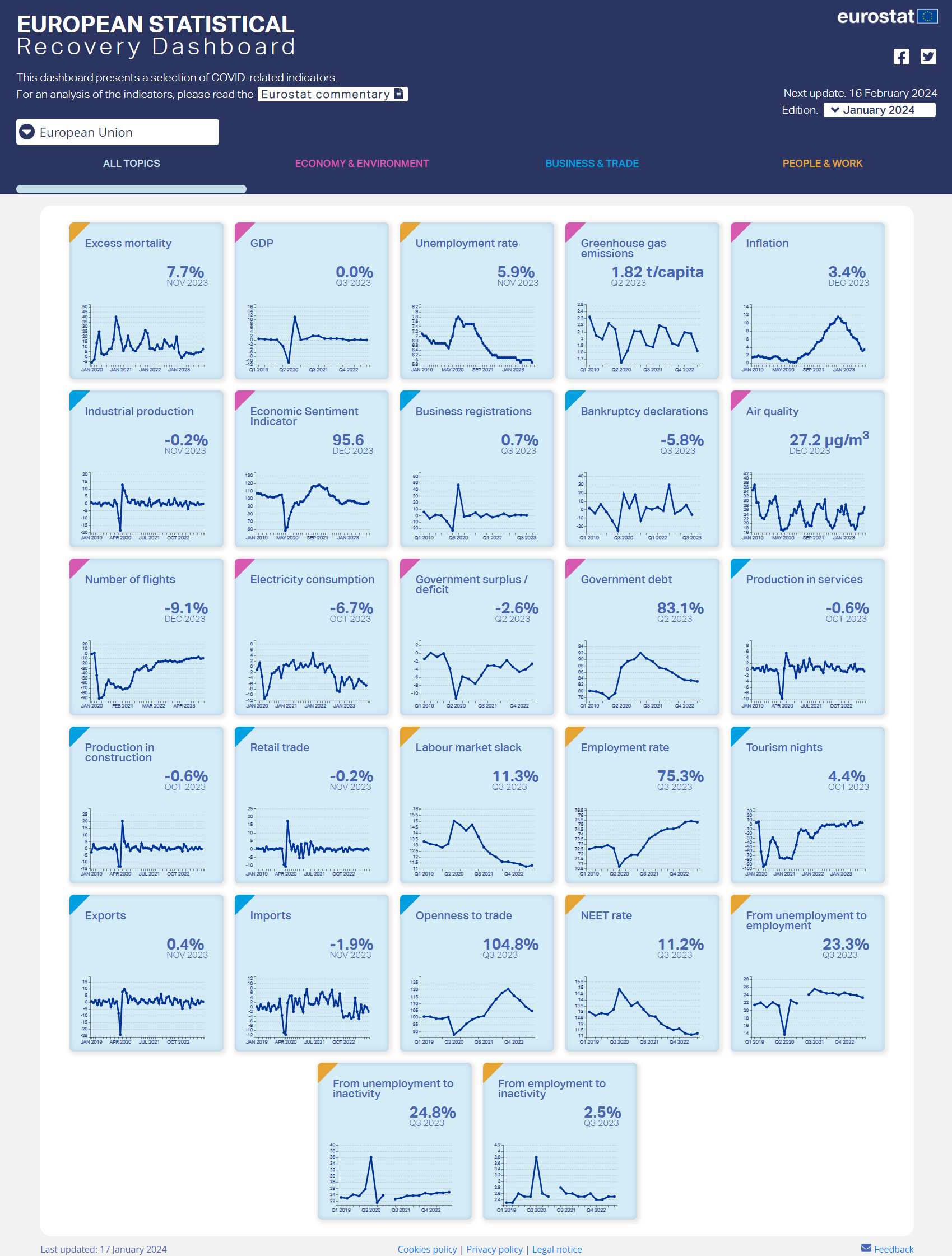European Statistical Recovery Dashboard: January edition

Today, Eurostat released the January edition of the interactive European Statistical Recovery Dashboard.
The dashboard contains monthly and quarterly indicators from a number of statistical areas relevant to tracking the economic and social recovery from the COVID-19 pandemic, across countries and time.
January highlights: EU industrial production, services output and retail trade decrease amidst rising inflation, alongside record-low unemployment
In the EU, both industrial production and retail trade declined in November 2023, following a slight decrease in services output in October 2023. Despite these latest falls, all these indicators remained above their pre-pandemic levels, albeit presenting a mixed picture in terms of trends. While the service sector has shown a significant upward trend, both industrial production and retail trade have exhibited subdued momentum over an extended period.
This less optimistic economic picture for the EU was further reinforced by the rise in the annual inflation rate in December 2023, marking the first increase since October 2022.
In contrast, the dynamics of unemployment and economic sentiment add a more positive layer to the overall economic landscape. The EU labour market continued to show resilience, with the unemployment rate decreasing in November 2023, equalling the historically low rate recorded in May. Moreover, EU economic sentiment maintained an upward trend in December 2023, although it still lags significantly behind pre-pandemic levels.
In the context of public health, it is noteworthy that in November 2023, at the EU level, the excess mortality rate increased for the fourth consecutive month, reaching 7.7%. Nevertheless, it is important to highlight that it remained below the rate observed in the same month of the previous year.
You can read the full analysis by clicking ‘Eurostat commentary’ on the dashboard’s header.
The dashboard is updated every month with the latest available data for each indicator.

The line charts in the dashboard offer many functionalities to easily explore and analyse the development of the indicators, such as displaying a longer time series, comparing several countries and downloading the customised chart or the source dataset.
For more information
If you have any queries, please visit our contact us page.
